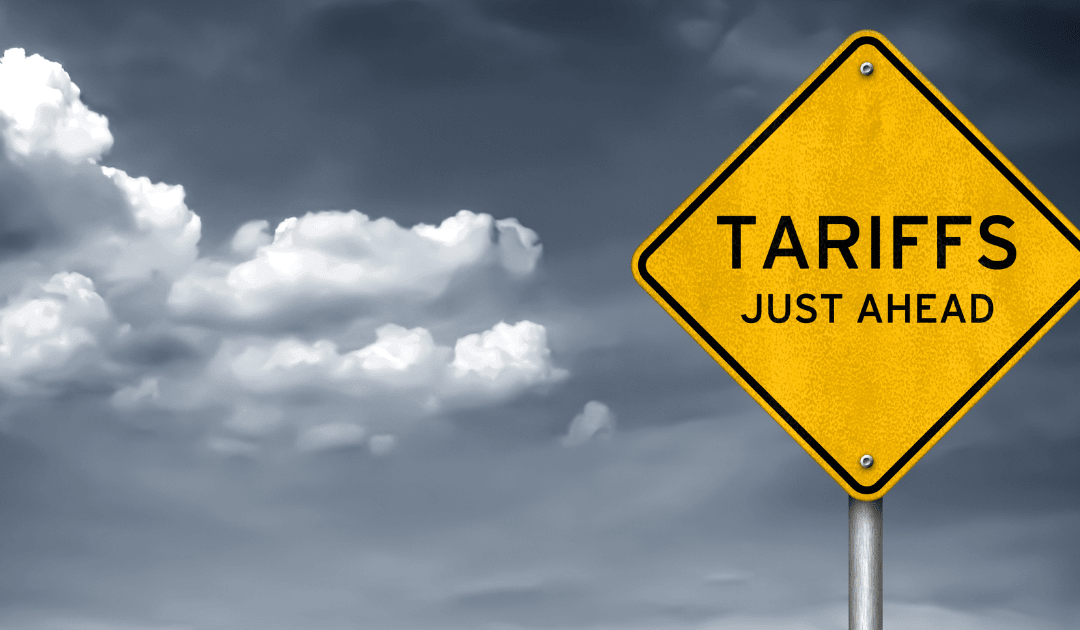In British Columbia, we wrapped up October with one of the oddest provincial elections in recent memory, only to immediately turn our gaze cross-border to an even stranger spectacle.
Here in the land of socialized medicine and progressive poutineries, the rhetoric of United States President-elect Donald Trump can often seem like nationalist propaganda, a badly written sitcom or just straight-up unhinged boasting. But love him or hate him, Trump is soon to be the 47th president of the U.S.
Blanket tariff impacts & a tough housing landscape
The national media narrative since the U.S. election has been dominated by Trumpian threats of a blanket 25 per cent tariff on all goods from Canada and Mexico. This spells immediate trouble for B.C. forestry products, Ontario-made cars and longstanding commodities of concern such as aluminum and supply-managed dairy. But those products are in for a rough ride regardless, with renewed negotiations on the horizon for the North American Free Trade Agreement (NAFTA) or, as it’s referred to on this side of the border, the Canada-United States-Mexico Agreement (CUSMA).
On the housing front, we share supply shortages, upwardly creeping home prices and overall challenging market conditions with much of the continental U.S. Meanwhile, aggressive housing policies paired with economic uncertainty have stalled the number of new builds in both regions, which does little to relieve market conditions.
Canadian challenges: Already great without tariff threats
There are, however, significant differences in our respective national per-capita GDP stats and household incomes. Canada has fallen significantly behind the U.S. on both fronts over the past decade.
Not only are we producing less on a per-person basis, but we’re also now earning less than U.S. averages. In the notably expensive housing market of San Francisco, for example, the median salary is $104,400 USD—significantly higher than the Vancouver and Toronto averages of $64,250 CAD and $62,050 CAD, respectively.
These realities combine to make life particularly challenging in Canada’s largest metropolitan regions as the regional populations grapple with the super-high cost of living expenses in addition to housing.
In short, our domestic housing landscape is already messy, and that’s without any Trump-imposed tariff threats. Alberta has wasted no time in loudly pushing against federal energy caps that don’t align with the Trumpian “open for business” energy-sector agenda. Our beleaguered Prime Minister’s late-November Mar-a-Lago dinner meeting with Trump has resulted in our federal government scrambling to further secure our borders, even as anti-Liberals across the country raise their hands in support of becoming a 51st state.
Further fallout to our GDP likely to come
With Canada already navigating a growth-challenged landscape, the already uncertain economic recovery in 2025 is further challenged by Trump’s trade tactics. As trade negotiations related to NAFTA/CUSMA get underway, the U.S. tactics of intimidation, and outright demands for Canada and Mexico to assume a subservient position within the structured agreement, are likely to cause further fallout to our national GDP.
Amid this uncertainty, our dollar is slumping against U.S. currency (as are most other Western currencies), and the Bank of Canada continues to implement rate cuts in an effort to spur economic growth.
Trade war will hurt the housing market and building conditions
The larger challenge amid Trump-led tariff sabre-rattling and a potential global trade war will be the cost of building supplies and imports. It’s important to note that Canada is the largest trading partner of the U.S., and a trade war, aside from political puffery and bluster, is beneficial to neither economy. But should reciprocal tariffs be put into place for any prolonged timeline, the cost of goods on both sides of the border would escalate.
This would further challenge homebuilder profitability, and these costs would inevitably be passed on to the buyer, which makes for a complicated end result of softening market conditions paired with challenged building conditions. Ultimately, this is likely to further stagnate new builds.
Optimistically, Canada could negotiate past the threats of the Trump administration. NAFTA was conceived as a three-way trade union to be of reciprocal benefit to the participant countries. Trump, however, is fond of positioning Mexico and Canada as taking unfair advantage of the U.S. economy.
This will be a tricky hill to climb for federal negotiators. There’s what the statistics and data demonstrate, and then there’s podium bluster. Hopefully, time, patience and diplomacy can once more find a workable solution to preserve the successful NAFTA alliance.
Please note that it’s BCREA policy to not respond to comments on any of its online articles.

Trevor Hargreaves oversees research and policy, government relations, and communications at the BC Real Estate Association (BCREA). He is also an Adjunct Professor at the Sauder School of Business at the University of British Columbia. Before joining BCREA as the Senior Vice President of Policy Research, Government Relations, Marketing & Communications in 2019, he served as Director of Communications, Government and Public Relations at the BC Dairy Association and, prior to that, toiled in regional media and journalism.














“even as anti-Liberals across the country raise their hands in support of becoming a 51st state” – Sorry, what? You can only have patriotic pride if you’re a Liberal?
Finally an article that paints an accurate picture. Yes Canada is in for a rough ride. The fact that Trudeau is holding the Country hostage until the second quarter of this year makes things even worse for Canada. And yes Canada has had it pretty good when it comes to trading with the USA. Canada is a small country with the population of California. Not significant. Fasten your seat belts it is going to be a rough ride.
I take GREAT EXCEPTION to you saying that anti-Liberals, i.e. Conservatives, “across the country raise their hands in support of becoming a 51st state”.
I am a Conservative…always have been; always will be and I am not raising my hand in support of becoming a resident of the 51st State. What utter nonsense.
Ive not spoken to any Canadian that wants to become the 51’st state and like a lot of other Canucks, really get disgusted when an ill informed person suggests we are. Enough of the disinformation.